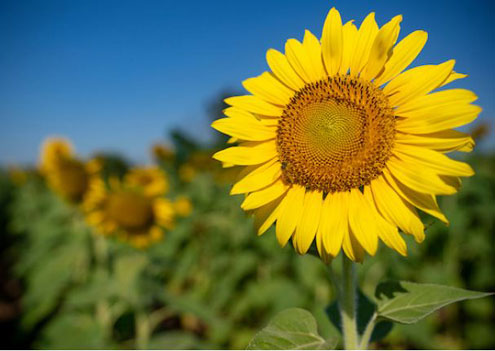Texas farmers continue to find ways to add value to their operations through alternative crops like oilseeds and cover crop forages.
Calvin Trostle, Ph.D., Texas A&M AgriLife Extension Service agronomist and statewide hemp and alternative crop specialist, Lubbock, said markets may be limited for alternative crops like sunflowers, sesame, Sudan grass and canola, but Texas producers are taking advantage of cropping opportunities.
For producers, alternative crops can serve as primary summer crops or provide supplemental income. They can also provide the benefits of a cover crop during the cool season.
“Alternative crops are a small piece of Texas ag production,” Trostle said. “But for producers looking for opportunities to supplement their primary crop production, they can really be a value-added component.”
Sunflowers show potential
Trostle said total acres for sunflowers in the Rio Grande Valley increased slightly but remained static in other regions of the state. Growers typically engage with buyers before acres are planted to fill contracts at set prices. Seeds are grown for two markets – as bird food and for oil extraction.
Per pound prices were good for both markets, he said. Seeds bound for “crushing” end up in oil form for various products, but primarily for cooking, especially in large-scale food manufacturing.

Sunflower seeds’ high-oleic content makes them more shelf-stable and better for cooking and frying, but their monounsaturated fats retain healthy attributes, he said.
Trostle said there may be growth potential in the demand for crushing-seeds for oil but the demand for them as bird food remained steady.
“Sunflowers seem to provide some price security and safety for growers, and it has the potential for premiums based on oil content,” he said. “It takes experience and building relationships with potential buyers to enter some of these alternative crop markets. That’s why we recommend growers dedicate some acres each season to experiment with growing options that might have potential for their operation.”
Finding markets for alternative crops
Production capacity in other alternative crops slipped or made gains based on regional demands, Trostle said.
Sesame seed acres remained close to last year, but demand dropped when a contractor pulled out of the Texas market, he said. As a result, prices have not been strong enough to generate interest in expansion among producers. It remains an alternative crop that is on a contract basis and filled by established growers.
Canola for oil production also experienced a decline in demand, even in surrounding states like Oklahoma, as acres moved to other states, Trostle said. However, some growers are finding a market for the cool-season crop as a high-value forage for dairy production in the Panhandle. Canola is a brassica, which are fast-growing, high yielding forage and cover crops, and its silage’s high nutritive value outperforms grasses like wheat and ryegrass.
Trostle said wheat, triticale and Sudan grass, which is a forage sorghum variety, have generated increased interest among producers. They are seeing the harvest and post-harvest value in these cool-season crops.
They can be grazed or grown as forage but also provide excellent cover-crop residue for growers who might follow with cotton or other warm-season commodities.
Trostle said Texas A&M AgriLife Research and AgriLife Extension scientists continue to research the versatility of these cool-season options and provide valuable information and recommendations to growers.
“A new major educational effort for me this year is the advent of prussic acid-free sorghums,” he said. “There are first-time sorghum/Sudan hybrids that eliminate prussic acid poisoning in stressed or frostbitten sorghums.”
Trostle said that for now, those seeds cost more, and there are first-year limited seed supplies.
“A lot of this initial work is laying out the pros and cons, but I think more and more producers are seeing the pros — especially in a grazing situation,” he said.

